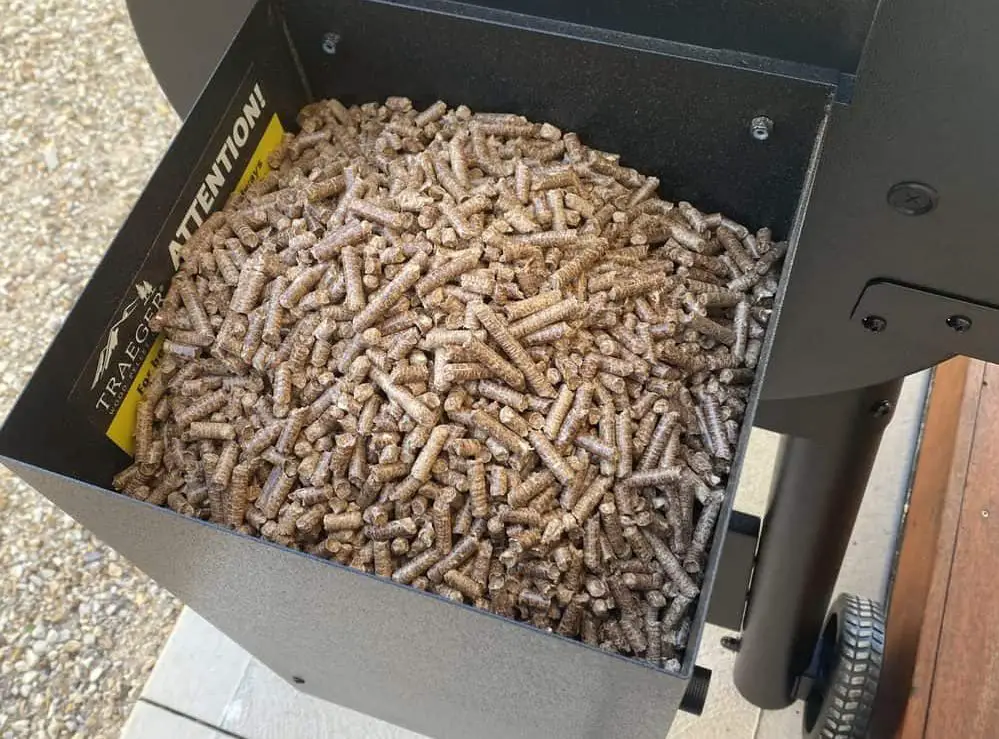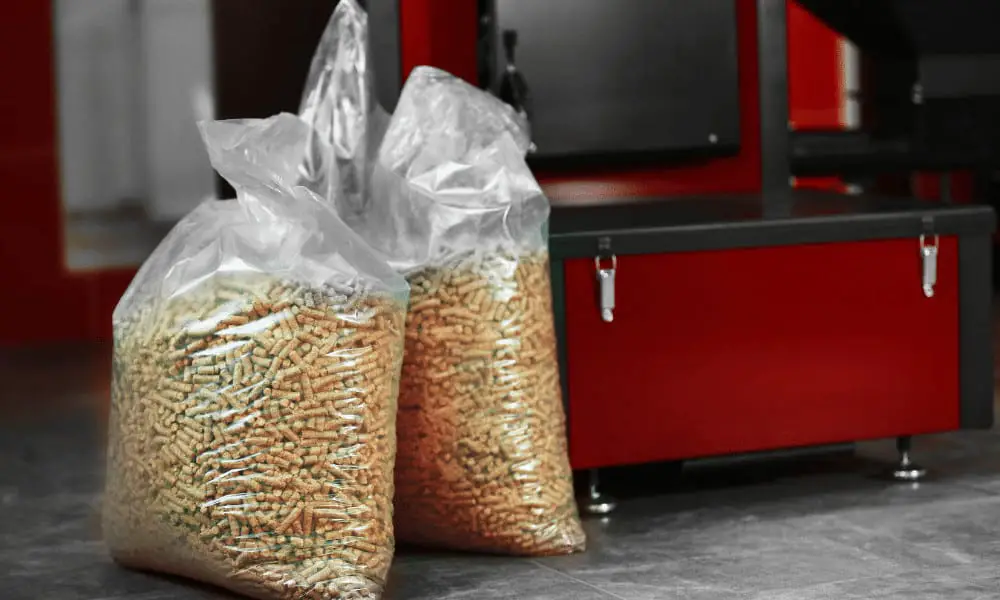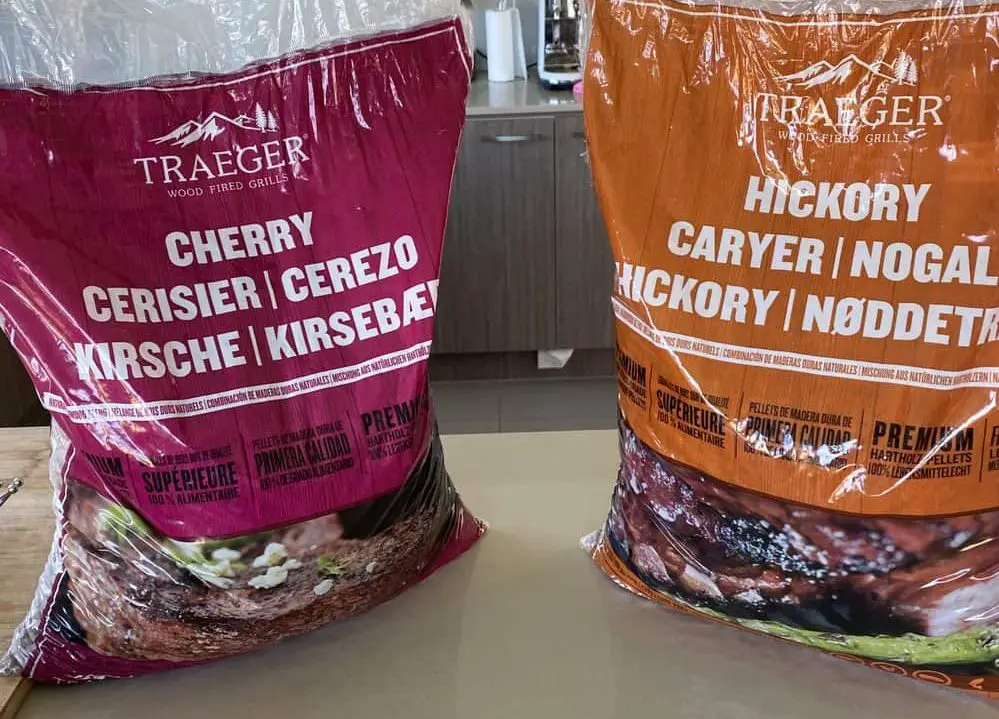Traeger Grills are at the pinnacle of pellet grill performance, simplifying and glorifying the process all in one.
But, when you’re going hard at 275°F for hours at a time, whether it’s for a classic Texas brisket or rack of ribs, you tend to go through a fair amount of wood pellets.
But, unlike trying to refuel a charcoal smoker or gas grill, it’s much much easier to keep the thin blue smoke rolling on your Traeger. Simply add more pellets to your Traeger while cooking!
Here’s everything you need to know, and some helpful tips to keep you on your merry way.

Although Traeger Grills aren’t complex machines to operate, they do require a few things to actually function.
These being, electricity to power the auger, fan and display, and wood pellets to produce the heat and the smoke we all are far too addicted to!
Luckily, unlike when you’re trying to add more charcoal to your charcoal grill, adding more fuel to a pellet grill is as simple as opening the pellet hopper and topping it back up.
It doesn’t impact the cook whatsoever, so long as you don’t actually run out of wood pellets, of course.
So, you absolutely can add wood pellets to your Traeger while cooking, and you don’t need to worry about temperature fluctuations. There’s nothing stopping that smoke from rolling!
Low Pellets Warning On Your Traeger: What To Do
If you’ve noticed your running low on wood pellets, or your sensor gives you a reminder, then it’s time to top up.
First, you have to make sure you’re actually running low on pellets in the hopper, and it’s not any kind of mechanical issue. A quick check in the pellet hopper will give you the full situation.
Secondly, you actually have to make sure you’ve got more wood pellets to add, not any heating pellets, wood chips, or anything else!
Once you’re set, you can safely lift the hopper lid and pour in your wood pellets. You shouldn’t experience any changes in temperature or smoke, so long as you add more wood pellets before you run out!
If you’ve completely run out of pellets in your Traeger, unfortunately you’ll have to look at other options. Your Traeger requires pellets to produce heat and smoke and will simply begin a shut-down cycle if you run out mid-cook.
Do You Have To Use Traeger Wood Pellets In A Traeger?

Here at GrillSimply, we’ve tried and tested just about all of the best wood pellets for smoking out there.
What we can tell you is that not all brands of wood pellets are equal. However, although Traeger recommends you use Traeger wood pellets, the truth is you can actually use any high-quality wood pellet, without fault in the machine or voiding your warranty.
Granted, you shouldn’t just use any brand, as there are those that fall apart more easily and more likely to cause issues, from your Traeger getting too hot or cold, to problems in your auger.
But, on the other side of things, some brands are actually able to produce more smoke in your Traeger, or stronger smoky flavors.
So, you can use other wood pellets in your Traeger. If you’re looking for alternatives, check out our review for Bear Mountain Wood Pellets, or BBQR’s Delight Vs. Traeger Wood Pellets.
Can You Mix Wood Pellets In A Traeger?

Honestly, I think it’s best to always use one brand and flavor of wood pellet at a time in your Traeger. This is to just help things burn consistently and evenly, avoiding unnecessary temperature fluctuations.
It’s certainly not worth mixing two different brands of wood pellets and adding them to the hopper at once, as they will inevitably burn slightly differently.
But, if you’re refilling your hopper while your Traeger’s still cooking, there’s no harm in refilling it with another brand or flavor of wood pellet.
As the older pellets get drawn through the auger and burn up, they will be replaced with the new. You shouldn’t really experience any changes in temperature or dramatic differences in smokiness.
Still, it’s not recommended to mix different types of wood pellets for use in a Traeger Pellet Grill.
Can You Use Heating Pellets?
Heating pellets should only be used for stoves or heaters. They should never be used in a Traeger, or any other pellet grills, or in any other cooker for that matter.
The main difference is that heating pellets are made from various materials, including binding chemicals, that shouldn’t come close to food. The fumes coming out of them could have detrimental effects on human health.
Additionally, the flavors coming off heating pellets leave a chemical taste in the food, similar to a lighter fluid taste, which easily renders it inedible.
On the other hand, smoking wood pellets are made with food-grade oil binders and have been manufactured in a way that removes these risks and unwanted flavors.
Don’t Use Old Or Wet Wood Pellets
If you’ve smoked with wood chips on a charcoal grill before, you’ll know that many backyard barbecuers will soak their wood chips before use.
Whether this is to add flavor or delay the smoking of the wood, wood chips do not lose their composition when they get wet.
BUT, wood pellets are not like wood chips. Wood pellets are basically compressed sawdust, held together with an oil binder.
If wood pellets get wet, or absorb moisture over time, they’re quality drops significantly. In fact, if your wood pellets do get wet, it’s likely they will completely disintegrate, which is the leading cause of auger jams and backfires in pellet grills.
This is exactly why you shouldn’t store your Traeger outside, store your pellets in your hopper for over 3 months, and why you DO NOT soak wood pellets before use.
Final Touch
So, running low on wood pellets in your Traeger really isn’t a concern – so long as you’ve got more wood pellets to add!
If you do run out of pellets entirely the Traeger will entirely switch off, so be sure you’ve got an adequate supply before you even start cooking.
It’s absolutely safe to add more wood pellets while your Traeger is still cooking, and so long as you add them before it runs out. You shouldn’t see any change in temperature, smoke, or effectiveness.


